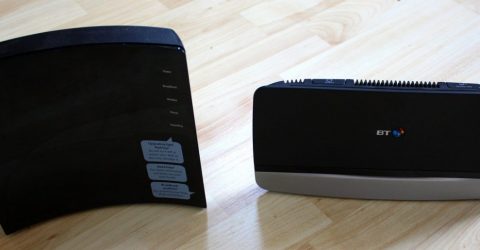BT does 46,000 Home Hub WiFi tests to prove ASA wrong, ad still banned

A surprisingly controversial ad from 2016 is still kicking up dust between BT, the ASA, Ofcom, and rival ISPs.
Squabbles between internet providers and the Advertising Standards Authority (ASA) are actually quite common. It’s a sort of corporate schoolyard, where ISPs are constantly ratting each other out to the ASA for ‘misleading’ claims in competitor’s adverts.
Adverts from major ISPs get banned every year, but the slow ASA process of investigating complaints means that adverts are usually banned long after they’re finished airing.
The offending 2016 ad makes the haughty claim that BT’s SmartHub router provides “the UK’s most powerful WiFi signal”. Deadpool star, Ryan Reynolds, then demonstrates the claim by clinging onto a helicopter with his tablet as it takes off.
The helicopter rises to 200 meters and the actor confirms that he indeed still has a WiFi signal on his tablet.
Upon release, the ASA received a hefty 61 complaints from a slew of upset competitors, including Virgin, Sky, and TalkTalk. They claimed that BT’s router didn’t actually reach distances of 200 meters, and that the line “the UK’s most powerful WiFi signal” was misleading and untrue.
The ASA ruled against BT, banning the ad one year after it began airing.
But BT wouldn’t let it go, certain that their claims of superior WiFi signal were all completely true – and they could prove it.
Although the advert is clearly supposed to be a joke, with a Hollywood actor being carelessly hoisted into the air by hapless BT employees, the scenario is still technically plausible.
As such, BT had to prove that their router could reach 200 meters in those same conditions.
Instead of a helicopter, BT set up a test house in the middle of a large field – installed with a SmartHub router. Thousands of tests were made at ranges up to 500 meters, easily proving that the router could effectively work at 200 meters from behind a single wall.
However, Virgin and Sky argued that the advert was still misleading because Ryan Renold’s router was inside a house near other houses, and not in a test field. They said that wireless interference from other houses would reduce the range of the signal, and the claim of “most powerful WiFi” was still inaccurate.
BT followed up with thousands more tests, taken from 10 real-world homes, to prove that their router was actually as good as the advert claimed.
However, despite all their additional testing and evidence, the ASA has refused to lift the ban.
In the end, it all comes down to wording.
The advert clearly claims the SmartHub has “the UK’s most powerful WiFi signal”. BT has spent all this time testing against Virgin and Sky’s routers, but they haven’t been testing against every single other router available in the UK.
Even though the ASA called in Ofcom to help verify BT’s data, they eventually declared all of BT’s extra testing essentially pointless, and refused to lift the ban on a 2 year-old ad.
So BT loses, but did anyone really win?






